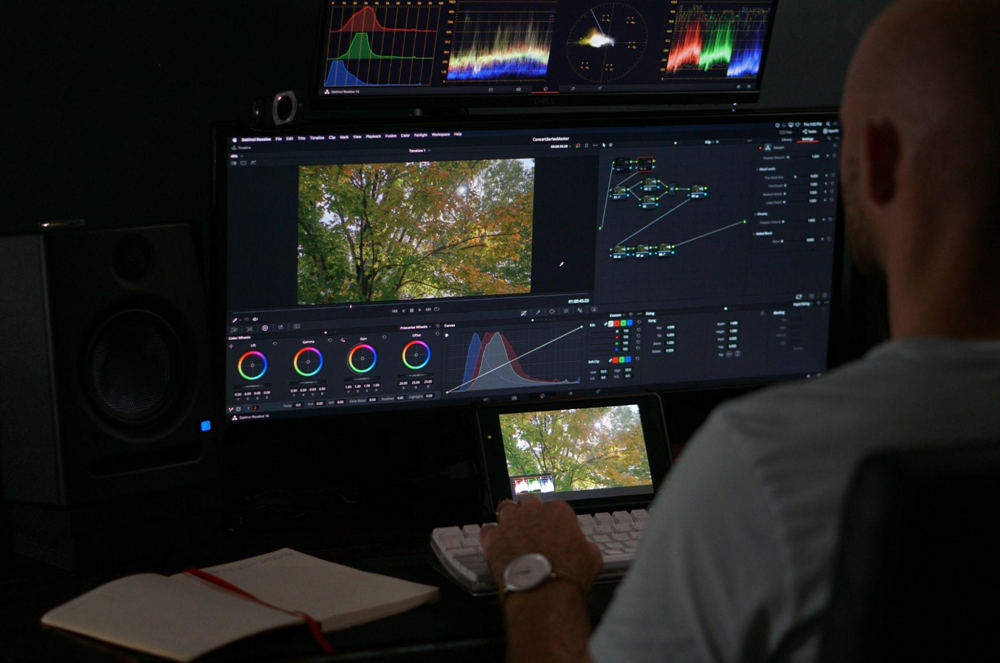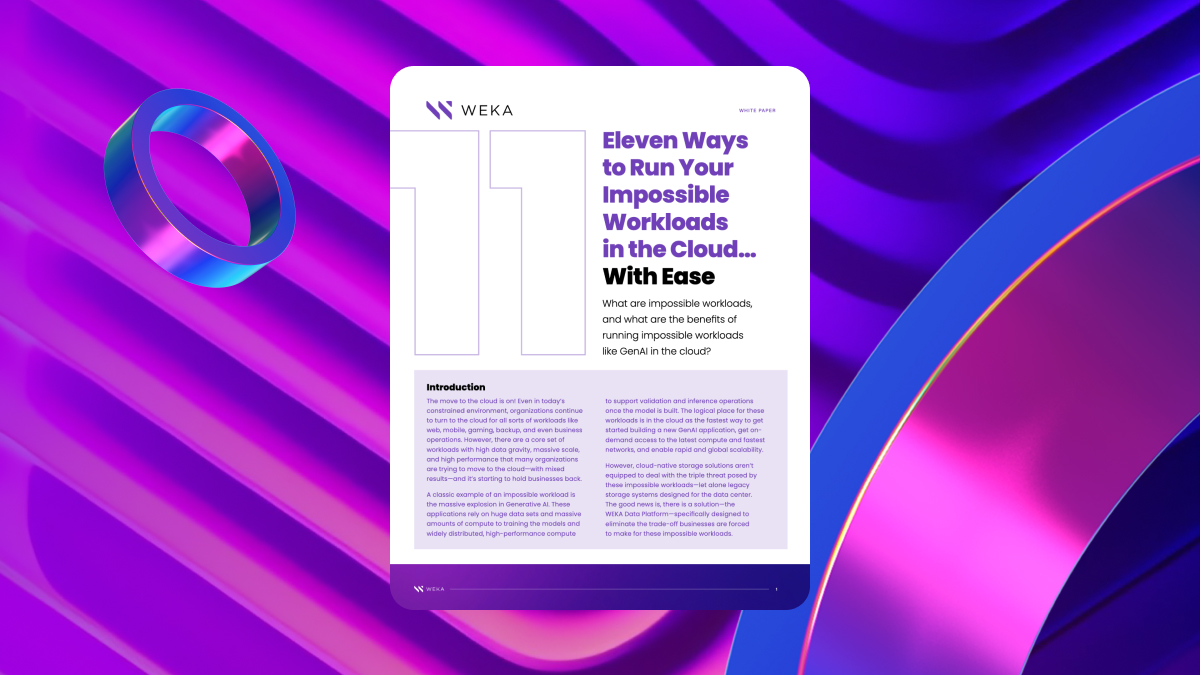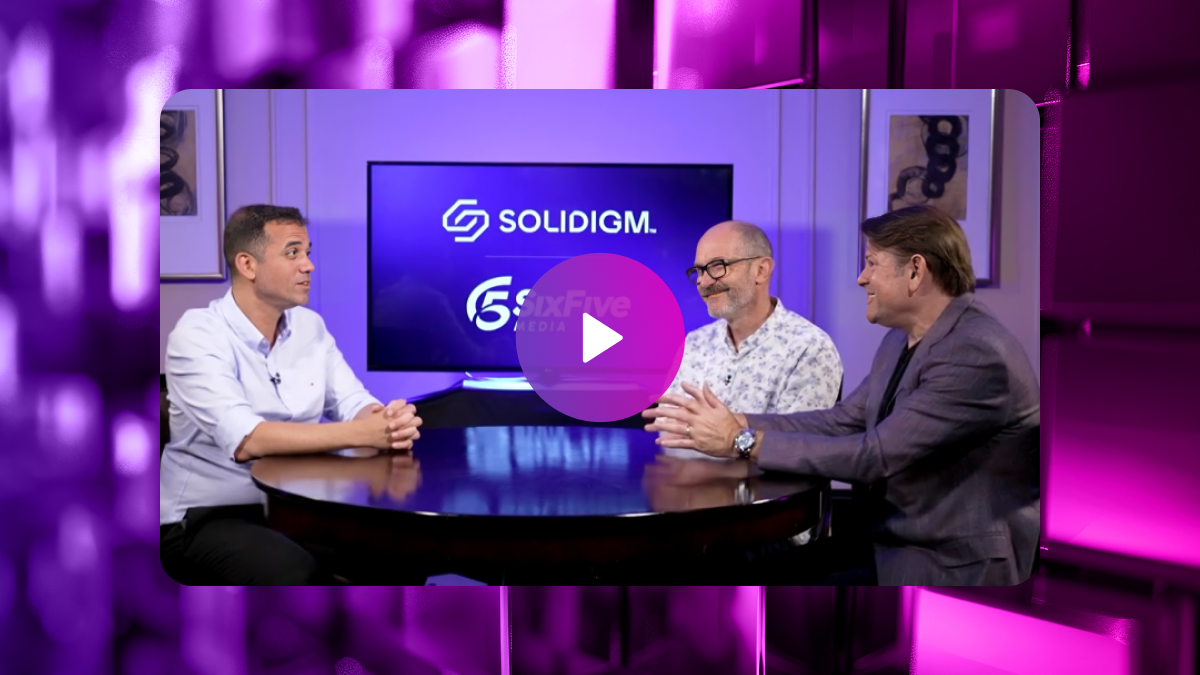What Is the Post-Production Workflow & How Do I Optimize It?

What is the post-production workflow? The post-production workflow is a video project’s process after it stops shooting and before the project is released. It includes editing the raw video, sound mixing, and visual effects.
How Does Post-Production Workflow Work?
Post-production is the final stage of any video project, where the footage shot and directed is now ready to be cut, combined, and edited into a final product.
In digital video, the post-production stage is complex and data-intensive. The advantages that digital video brings to the table (ease of management, ease of manipulation, etc.) also introduce new challenges in production.
Consider the primary states of the post-production process:
- Raw Footage: The studio receives the raw footage from the shoot. This footage is sent “as-is,” but it usually doesn’t come in a single dump. Often, this footage comes in the form of “dailies” for longer projects. The post-production process can start before all the footage has arrived, depending on the program’s size.
- Storage: Raw digital footage is massively difficult to store. Not only are file sizes massive, but all the videos must be tagged and organized for editing later.
- Rough Cut: The first version of the edit, in which the chosen scenes are laid out in the order of the final film (or some close approximation). This rough cut will receive notes and, over time, undergo several revisions from the editors, director, producers, etc. At some point, these parties will agree that the edit from the footage is where it needs to be, in which case the cut is “locked.”
- Visual Effects: Once the post-production team has a locked cut, the visual effects team will add effects like color grade changes, CGI addition, animations, etc. That’s why it is critical to have a locked cut–once VFX starts work, any changes to underlying footage would be prohibitively expensive.
- Mixing: The sound is added to the film to coincide with the action on-screen. Recorded sound footage from the on-site shooting, foley effects and digital sound effects are all synced to the cut.
- Final Cut: After months of work, with the VFX and sound in place, the final cut is approved and released.
What Are Critical Cloud Considerations for Optimizing Post-Production Workflows?
From the filmmaking perspective, this process is a tale as old as time. From an IT and cloud perspective, however, we start running into infrastructural questions.
Some of the key processes that happen during the post-production stage of a film are primarily:
- Storage
- Classification
- Collaboration
- Versioning
Data must be readily available so that the organization’s integrity can remain intact to support versioning. Different professionals can collaborate on the same object without stepping on each other’s toes.
Additionally, performance bottlenecks are a significant issue. Teams working on films often perform repetitive tasks and face tough deadlines, and nothing can kill their productivity more than slow-loading files and video rendering times.
This applies even more so to VFX-heavy projects. Suppose there’s a mix of live footage and high-demand animations. In that case, post-production teams are loading enormous performance demands to animate, render, and integrate complex images into a single movie.
Most of these problems are ones that cloud computing was invented to solve. These solutions include:
- Optimizing Storage: Storage needs to be responsive to work efficiently on video footage. This doesn’t just mean fast storage for always-on editing but also cost-efficient archival storage for finished products. Critical challenges that proper cloud storage must address are read and write rates, size and availability, reliability (including accessibility and resilience through automated backups), and cost.
- Optimizing Organization: Depending on how a project is organized, the tagging, classification, and retrieval mechanisms used in cloud apps are critical. Even in the most straightforward organizational schemes, post-production teams will often count on the ability to sort film based on date or time quickly. Other features expected far beyond that include search features and automated file system management.
- Utilizing Remote Editing: It could be better, and more efficient, to have individuals working on local files all the time. Cloud computing allows these post-production teams to access fields on a remote cloud server and directly edit them (or a version of them) in real time.
- Collaboration: Multiple people will need to work on some files together or have access to multiple files simultaneously without erasing their teammates’ work. Additionally, the underlying file systems should be able to monitor and control access and versioning so that, if something goes wrong, there’s an option to rewind from a previous version.
It’s important to note that versioning, and the ability to rewind to a previous state, is crucial with a locked cut.
Cloud-Based Workflows Optimized in the Cloud with WEKA
Post-production workflows are the most crucial part of the film industry. Even if the digital film has revolutionized how directors shoot their movies, it’s also radically changed this post-production process.
These workflows count on fast, always-available storage, strong support for high-demand workflows, and support for collaboration and file versioning. WEKA can provide that.
With WEKA, you get the following features:
- Streamlined and fast cloud file systems to combine multiple sources into a single high-performance computing system
- Industry-best GPUDirect performance (113 Gbps for a single DGX-2 and 162 Gbps for a single DGX A100)
- In-flight and at-rest encryption for governance, risk, and compliance requirements
- Agile access and management for edge, core, and cloud development
- Scalability up to exabytes of storage across billions of files
Contact our team of experts to learn more about WEKA and how we can support your post-production workflows.





